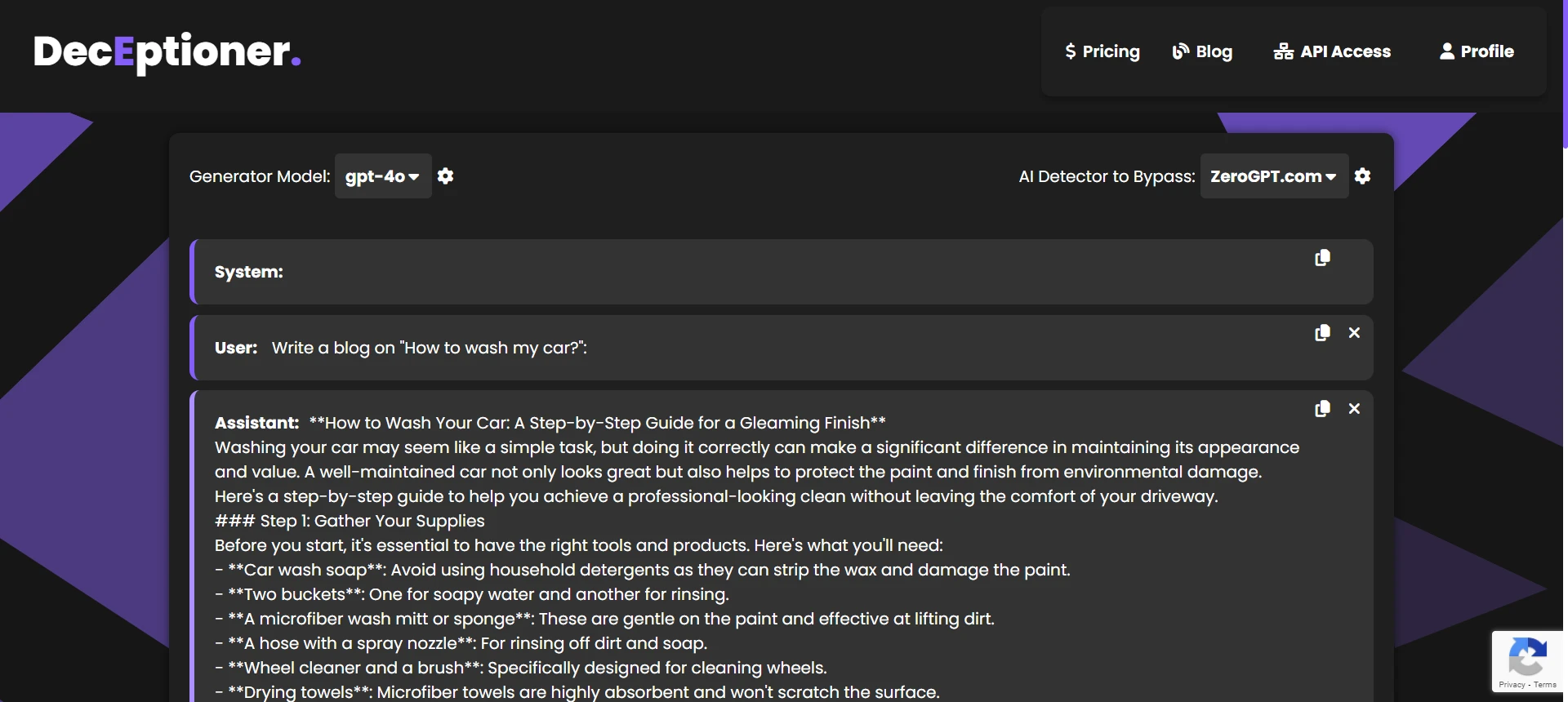As we all know, Perplexity.ai is a fantastic answer engine/research assistant that generates concise, source-based summaries. However, is it capable of fully “humanizing” AI text to bypass detectors like Turnitin? The short answer is NO. The longer answer is the devil lies in the details. Keep reading to know more about it.
Why Perplexity.ai can’t reliably humanize AI text?
The simple answer is just like other large language model (LLM) apps, Perplexity wasn’t made to bypass AI detectors. You can see it on their website as well: they never market themselves as an AI humanizer or a tool that can evade AI-detection. Hence, if it is not made to do this task, it won’t be able to do it.
To give you a rough idea, whenever text is generated by AI, it usually has a relatively low perplexity and low burstiness. Think of perplexity as how “unpredictable” the text is, and burstiness as how much sentence lengths and structures vary. Humans often produce text that is more unpredictable and has a mix of long, short, and medium sentences. AI often leaves a steady pattern that detectors like Turnitin are designed to spot. It has been reported that Perplexity’s output is detected ~85–100% of the time by Turnitin depending on text length and context (i.e., the longer your text, the higher the chance of detection).
Also Read: How Does Perplexity AI Work?
What are “humanizing” techniques?
Humanizing basically means making AI text look more “organic” or “messy.” Formal AI outputs often have perfect grammar, consistent structure, and balanced vocabulary—stuff that AI detectors look for. To evade them, people use rewriting strategies such as:
- Paraphrasing & rewording: swapping phrases or synonyms without changing meaning.
- Syntactic variation: mixing up long and short sentences in the same paragraph.
- Linguistic naturalization: adding contractions (like don’t, isn’t), idioms, or minor grammar mishaps.
- Personal/informal touches: occasional contradictions or small subjective comments.
Also Read: Perplexity AI vs. Jenni AI
How does Perplexity compare to other “humanizer” tools?
- Perplexity.ai: Built as an answer engine, not a humanizer. You can manually rewrite its text to add variety, but that’s entirely up to you.
- Undetectable AI: Specifically built for bypassing detectors. They often claim (but cannot ensure) better success vs. GPTZero/Turnitin.
- StealthGPT: Offers a great comprehensive tool for bypassing Ai detectors like GPTZero and Turnitin.
- QuillBot: Good for rewriting but not tuned to bypass AI detection. Their dedicated "humanizer" tool is also not great either.
- Deceptioner: Another AI text humanizer which you could check out if you want a more reliable approach than rewriting everything yourself.
“Arms race” with detectors
Turnitin and other AI detectors are in a cat-and-mouse scenario with AI text humanizers. Interestingly, Turnitin rolled out an August 2025 update boasting “AI bypasser detection,” claiming they can now spot artificially humanized text. Whether that’s foolproof is anyone’s guess. Turnitin also states their false-positive rate is <1%, though many people have come forward with stories of false accusations or non-native style writing that gets flagged. So, keep in mind that even the best humanizers can get caught as detectors evolve.
Some user experiences
People who copied and pasted Perplexity-generated text have reported being flagged by Turnitin and other detectors quite consistently (85–100% of the time). A few anecdotal cases exist where short or heavily edited Perplexity outputs slipped through, but overall, it is not consistent. Some folks attempt layered processes: Perplexity → a dedicated humanizer → manual tweaks → final check, and even then, it’s a toss-up. Minimal edits or a quick one-pass paraphrasing (like QuillBot) rarely fool Turnitin now.
Ethics and policy
Just like any other LLM or AI tool, using Perplexity to produce content and submitting it as if it were 100% your own work is likely academic misconduct. Many students still do it (sadly!), but the risks are enormous—failing grades, disciplinary action, or even worse. Institutions are switching up their curricula and using robust detectors, so it’s a risky game indeed. Legitimate uses for Perplexity include summarizing articles, clarifying complex topics, and providing references, but you should always rewrite in your own style and cite your sources.
Frequently Asked Questions
Q1. Can Turnitin detect Perplexity’s output?
Yes, Turnitin and other detectors can easily pick up on unedited Perplexity text because it doesn’t incorporate any advanced “humanizing” strategy. Expect your content to be flagged unless you heavily rewrite it.
Q2. Are there ways to reduce detection scores with Perplexity?
It’s possible but requires manual writing or layering with humanizer tools. If you rewrite your text extensively with inconsistent grammar, varied sentence lengths, and personal flair, you might fool some detectors. However, it’s still a gamble.
Q3. Is using Perplexity considered plagiarism?
No, simply using Perplexity for summary or research isn’t plagiarism by itself, especially if you’re referencing your sources properly. But presenting AI-generated text as your own original writing can constitute academic dishonesty if not disclosed.
Q4. Are there better ways to bypass Turnitin’s AI detection than Perplexity?
Yes, you can either write everything yourself (the safest path), or you can use specialized AI text humanizers like Undetectable AI, StealthGPT, or Deceptioner. Even then, there’s no 100% guarantee of success.
The Bottom Line
Perplexity.ai is a brilliant research tool but is not designed to humanize AI text. If you need to specifically bypass AI detectors, you either have to rewrite heavily on your own or use a tool that is made for that purpose (for example Deceptioner). But even then, you could still get flagged. Turnitin and other AI detectors keep getting better, so don’t rely on shortcuts if the stakes are high.
In my personal opinion, it’s best to use Perplexity for research, and then produce your own writing with proper citations. This approach not only helps avoid detection but also upholds academic integrity. If your main intention is to cheat the system, you might slip by once or twice—but the risks and ethical pitfalls are huge.

![[HOT] Can Perplexity Humanize AI Content?](/static/images/can-perplexity-humanize-ai-contentpng.webp)
![[Case Study] Can Phrasly AI Humanizer Bypass GPTZero?](/static/images/can_phrasly_ai_humanizer_bypass_gptzeropng.webp)
![[STUDY] Can Phrasly AI Humanizer Bypass ZeroGPT?](/static/images/can-phrasly-ai-humanizer-bypass-zerogptpng.webp)
![[STUDY] Can Phrasly AI Bypass Turnitin?](/static/images/can-phrasly-ai-bypass-turnitinpng.webp)
![[HOT TAKE] Is Winston AI or GPTZero more accurate?](/static/images/is-winston-ai-or-gptzero-more-accuratepng.webp)





